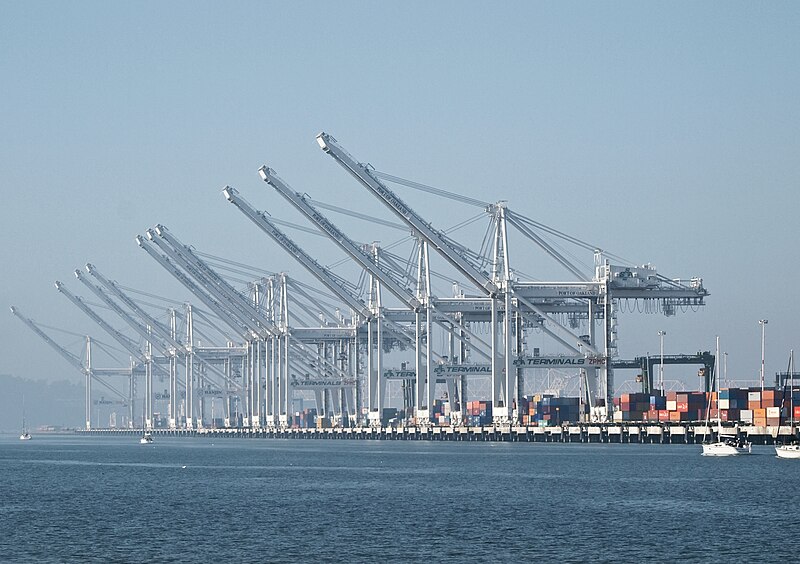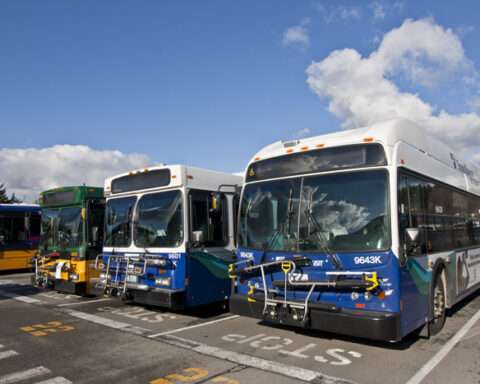The Port of Oakland and the Northwest Seaport Alliance, encompassing the Ports of Seattle and Tacoma, have joined a U.S. Department of Transportation public-private partnership designed to provide comprehensive information about the U.S. supply chain.
The Freight Logistics Optimization Works (FLOW) initiative stems from interdepartmental efforts in 2021 to address disruptions caused by the COVID-19 pandemic. The initiative includes the nation’s busiest container ports, major ocean carriers and some of the largest retail importers.
Through FLOW, the DOT gathers, aggregates and anonymizes data shared by participants about inbound container freight, beginning with importer purchase orders. This information then aligns future demand volumes with current regional capacity to transport ocean containers.
Industry participants can access secure data via a shared online portal managed by the Bureau of Transportation Statistics, as well as connecting their internal systems to that data. DOT works closely with these industry members to develop and improve use cases for FLOW data. FLOW members use this data for more accurate estimates of congestion at ports and inland networks, as well as tracking cargo shifts because of events on the open sea.
FLOW now has more than 80 members, including the eight largest U.S. container ports, nine of the biggest ocean carriers and nine of the top 20 import retailers. More than 90 additional companies are working on the onboarding process.
The addition of Oakland and the alliance means FLOW now includes all five major container ports on the West Coast, including the Port of Los Angeles and Port of Long Beach.
“FLOW’s membership now reaches the five largest container ports on the West Coast, which will lead to more informed decisions across America’s supply chains,” Transportation Secretary Pete Buttigieg said. “This work serves to improve efficiency and ultimately help lower costs for consumers.”
Together, these ports handle roughly 95% of the inbound container volume on the West Coast. With all the major West Coast ports now participating in FLOW, ocean carriers, shippers, truckers and railroads will have better tools to plan for and anticipate capacity needs, ensuring smooth movement of cargo and reducing the risk of bottlenecks, the DOT said.
FLOW got its first major stress test with the March collapse of the Francis Scott Key Bridge after it was hit by a container ship, snarling operations at the Port of Baltimore for nearly three months. Although the port itself is not part of the initiative, logistics companies and major retailers were able to use the data FLOW provided to reroute cargo and minimize effects on supply chains.
Last week, Buttigieg held two separate meetings with ocean carriers and shippers to expedite the return of normal container traffic at the Port of Baltimore and resolve other supply chain issues.
Photo by Ingrid Taylar













